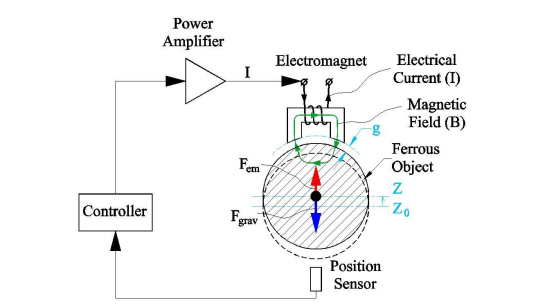

0755-23321087
What is a magnetic suspension bearing? In our daily life most of the bearings encountered are ball bearings, and magnetic suspension bearings are still unfamiliar to many people. In this article, Tsino-Tek explains what a magnetic suspension bearing is and what are the difficulties of a magnetic suspension bearing?
Compared with traditional bearings active magnetic bearings have significant advantages, such as being used in vacuum, dust-free, corrosive, high and low temperature environments. It can realize a 100% oil-free environment and no pollution to the process; it can also realize active damping and vibration control of the bearing, thereby improving the bearing performance; it can also use the controller to detect the rotor position, to monitor the running state of the rotor and prolong the service life of the equipment. The working principle of the magnetic suspension bearing is as follows: the position sensor detects the deviation of the rotor relative to the reference position and the microprocessor as the controller gives a control signal, which becomes a control current after passing through the power amplifier and the control current is applied to the electromagnet actuator. The corresponding electromagnetic field is established, which, as a result, always keeps the rotor suspended in the set position.

What are the difficulties of magnetic suspension bearings? It can be said that the magnetic bearing is a comprehensive subject technology, involving electricity, magnetism, machinery, heat, control and other aspects. In terms of control it is necessary to consider a reasonable controller that can actively control the stiffness and damping of the bearing, and a unique algorithm is required to solve the problem of rotor imbalance; in terms of electrical aspect, it is necessary to ensure a reliable and low-cost design, which can realize the function of the power amplifier On the magnetic circuit, a reasonably optimized magnetic circuit design is required to ensure the optimization of the magnetic circuit design; mechanically, high-precision machining is required to ensure stable and reliable control. Besides, the design of the high speed shaft is also a difficult point. Rotordynamics is the key to solving the problem; in addition, because of the non-contact conduction and heat dissipation of magnetic bearings, thermal design is also particularly important to ensure necessarily that the copper loss and iron loss of the coil are minimized.
Tsino-Tek's magnetic levitation controller AMBC uses an acceleration algorithm based on SoC FPGA hardware with a control frequency of up to 64kHz, which can drive five-axis magnetic levitation bearings.